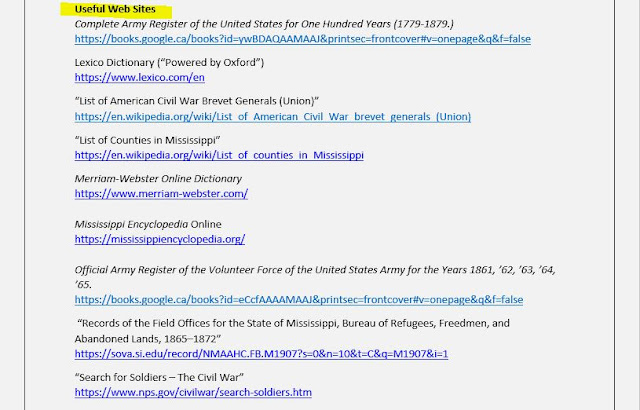If, like me, you do
lots of transcribing within a single Smithsonian Institution project, you may
find it challenging to try to remember all the little things. That guy’s last name: Is it Buckwalter or Buchwalter? What’s the deal with that lowercase F that keeps
cropping up in handwritten documents? How do I transcribe the numeral one half so
it appears as ½ instead of as 1/2? There are just too many things to keep track
of!
Never fear! As a
former librarian, I’m here to assure you that you don’t have to keep all those
nitpicky details in your head – that’s simply impossible! Rather, you just need
to know where to look to find what you need, when you need it. And that’s where
a style sheet comes in.

A “Cheat Sheet”? More Like a Neat Sheet!
In essence, a style
sheet is a “cheat sheet” that professional editors and proofreaders use so that
they make consistent changes when they mark up documents. These wordsmiths
develop style sheets to establish the conventions for the document they’re
working on, such as its grammatical style. Then they refer to their guide as
they work to ensure that they always follow the typographical and grammatical “rules”
of the document.

When I was a proofreader for a prominent Canadian advertising agency, I was responsible for proofreading material from over 30 companies, and without my style sheets I’d have been sunk. Some companies used American spelling; some used Canadian (or British) spelling. Some used Oxford commas; some hated them. And each had their own particular rules about when to use trademark symbols and how represent other legal information. My style sheets made my job a whole lot quicker and easier – they eliminated much of the guesswork right off the bat, giving me confidence that I was adhering to the company’s wishes as I reviewed its documents.
If you decide to
concentrate on a particular area of SI transcription, you may find it helpful
to put together your own handy road map. Use it to note anything that is
helpful to you as you work.
What follows is the format
I use, which includes sections for items I need to keep track of. You might
find it more logical to organize your style sheet differently, and that’s
perfectly fine. Your style sheet is a very personal document – and it should be
a work in progress. This is your tool, so make it your own.
Here’s how I’ve been
organizing my style sheet for documents within the Freedmen’s Bureau Transcription Center projects. (We’ve currently just started to work on the state of Mississippi, so
I’ve been adding things as I find them.)
Usage
 Here’s
where I put the “big stuff” about SI preferences, such as not inserting returns
at the ends of lines. I also might note things like unusual handwriting
conventions (the dreaded “long s”*) or any major thing that crops up again and
again in the project I’m working on.
Here’s
where I put the “big stuff” about SI preferences, such as not inserting returns
at the ends of lines. I also might note things like unusual handwriting
conventions (the dreaded “long s”*) or any major thing that crops up again and
again in the project I’m working on.* In handwriting from the 19th century and earlier, authors often handwrote double-s (“ss”) as what looks like “fs”; that f-looking letter is called a long s. (Source: https://en.wikipedia.org/wiki/Long_s)
Dates and Numbers
This part of my style sheet includes whatever
I notice about how dates and numbers are represented in original documents. (For
example, letters written by Quakers within the North Carolina section of the
Freedmen’s Bureau Project used a different style of dates.) I also use this
section to keep track of SI Transcription Center preferences for dealing with
numbers in transcriptions.
Punctuation and
Typographical Style
I use this section to note punctuation
anomalies – things to watch out for. For example, “&c.” is commonly used
for “etc.” in Freedmen’s Bureau documents.
Permitted Double-Bracketed
Notations
In this area I put all information about “tags,” those double bracketed bits, in one place so that I use them consistently.
Alt Codes for Special
Typographical Characters
Alt-codes are useful for inserting special
characters into transcriptions, such as ½, or long dashes (—), or the “pipes” (|)
that separate columns within tables. Here I note the ones I use most often.
Useful Web Sites
I list the URLs of web sites I often refer
to in this part of my style sheet. (I also bookmark these URLs in my browser
for even quicker access.) As part my reviewing process I often try to verify
the spellings of place names and personnel, so I like to have good reference
sources at my fingertips. (Note: If you discover anything really unusual, make
sure to contact SI staff so that they’re know about it and can pass along the
information to the rest of us.)
Still Up a Stump? An Alphabetical List of Words and Phrases Is Handy
I list
things like unusual spellings of words, surnames that have the potential of
being misspelled, abbreviations, or unfamiliar expressions alphabetically. (“Up
a stump”? Huh?)
So, are you ready to add some style to your
transcriptions? Give my cheat sheet idea a try and let us know if it helps your
process. And be sure to use the notes field of the transcription pages to share
your discoveries with other volunpeers. #WeAllLearnTogether.
-Beth Graham, Smithsonian Transcription Center Volunteer
The label "lifelong learner" describes Beth Graham best. She thrives on new challenges, and has held positions as varied as children's librarian, advertising agency proofreader, crochet pattern designer, and Crafty/Bluprint Instructor. Currently, Beth keeps busy by volunteering on the Freedmen's Bureau Project in the Smithsonian Transcription Center, knitting ever more socks for her overflowing sock drawer, and playing clarinet in the local New Horizons band. A native of California, Beth lives in Ontario, Canada.
* This is the second post in a series of blog posts from long-time volunpeer Beth Graham (see her first post here). While transcribing and reviewing over 4,000 pages of TC projects, Beth has gained insight & knowledge, and uncovered fascinating historical details. Follow along in this series to learn from Beth as she shares her personal motivations, expert tips, and transcription discoveries!
















No comments:
Post a Comment